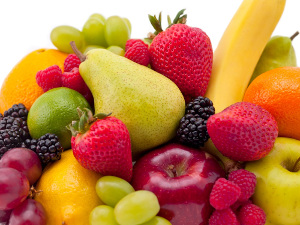How can blueberry exporters increase their revenue by leveraging novel conservation technologies and global trade data?

In this installment of the ‘Agronometrics In Charts’ series, Agronometrics explores the significance of post-harvest blueberry preservation to unlock new market opportunities. Each week, the series focuses on a different horticultural commodity, highlighting a specific origin or topic and visualizing the market factors that drive change.
In the intricate world of blueberry farming, success hinges not only on the quality of the fruit but also on the timing of its arrival in the market. Proper post-harvest handling and shipping are critical to prevent product rejection and ensure consumers receive blueberries at their peak in taste, nutrition, and aesthetic appeal. However, navigating the volatile market dynamics, especially for perishable products like blueberries, presents a formidable challenge.
Amidst these challenges, innovative solutions have emerged to enhance post-harvest preservation and extend shelf life. One such groundbreaking technology is RipeLocker. This pallet-sized low-pressure storage unit revolutionizes the preservation of produce by creating a controlled atmosphere environment. The vacuum pump swiftly establishes optimal conditions, including high humidity and precise control of pressure, oxygen, and carbon dioxide levels. By reducing respiration and suppressing ripening, RipeLocker significantly extends the freshness and shelf life of blueberries.
To delve deeper into the potential transformative impact of RipeLocker technology on blueberry storage, we spoke with Brenton Roy, a fourth-generation farmer from Eastern Washington State. Brenton's company, Oasis Farms, specializes in hops and fresh organic blueberries, but also grapes and apples. Their blueberry harvest season spans from mid-June to late September. But, like other growers in the Pacific Northwest, Oasis Farms' peak harvest period coincides with the lowest prices for blueberries in the US market.

Prices of Blueberries in the US Market versus Volume of WA State Blueberries | Cultivated All
In their quest to enhance shelf life and maximize profits, Brenton and his team have explored various strategies, including the adoption of new plant varieties that are expected to store better than the current ones. However, Oasis Farms expects to wait another year or two for the blueberries from these new genetics to become commercially available. In the meantime, RipeLocker technology has emerged as a game-changer for the company over the past four years.
By leveraging RipeLocker technology, Oasis Farms has extended the quality and shelf life of their blueberries, doubling the storage duration compared to traditional methods. While Modified Atmosphere bags (MAP) provide a comfortable three-week storage period, RipeLocker enables Oasis Farms to store blueberries for up to six weeks without compromising quality. This extended storage capability allows them to strategically delay the sale of a portion of their August harvest.
Oasis Farms currently leverages RipeLocker to extend their selling season in the US domestic market. During the peak harvest period in August, when market prices are at their lowest, Oasis Farms stores a portion of their yield. Subsequently, they release this stored fruit into the market in September and October when demand is high, and prices soar. In August 2023, for instance, the price of blueberries in the US market surged from $5.86/kg to $14.32/kg by October. By delaying sales and capitalizing on the seasonal price fluctuations, Oasis Farms can effectively double their revenue.
To diversify their market, Oasis also began exporting some of their blueberries to Taiwan via airfreight and is considering using RipeLocker to ship their blueberries by boat. The utilization of such technologies, which can extend the shelf life of blueberries, presents a significant opportunity for exporters to access new markets that offer higher prices. In the chart below, we examine some markets with higher import prices than the US in September and October, which could potentially provide opportunities to sell a portion of the fruits harvested during the peak Washington state season in August: Japan, Iceland, Indonesia, South Korea, and Vietnam

Fresh Import Prices By Partner | Cultivated All

While there are numerous complex variables to consider before entering new markets, blueberry exporters can now leverage effective conservation technologies and updated Global Trade Data to access previously untapped opportunities.
In our ‘In Charts’ series, we work to tell some of the stories that are moving the industry. Feel free to take a look at the other articles by clicking here. You can keep track of the markets daily through Agronometrics, a data visualization tool built to help the industry make sense of the huge amounts of data that professionals need to access to make informed decisions. If you found the information and the charts from this article useful, feel free to visit us at www.agronometrics.com where you can easily access these same graphs, or explore the other 21 commodities we currently track.









































